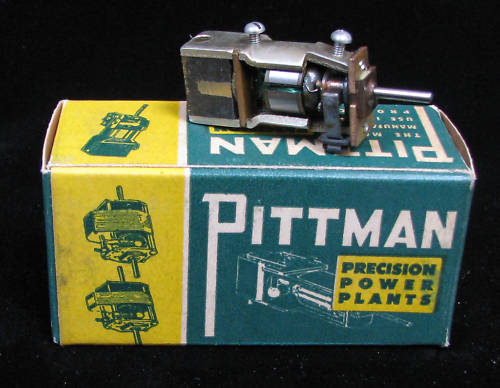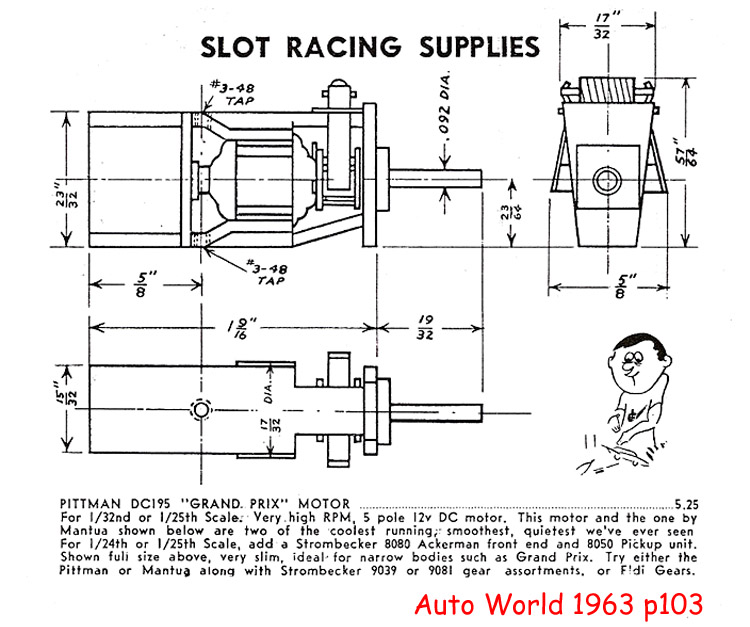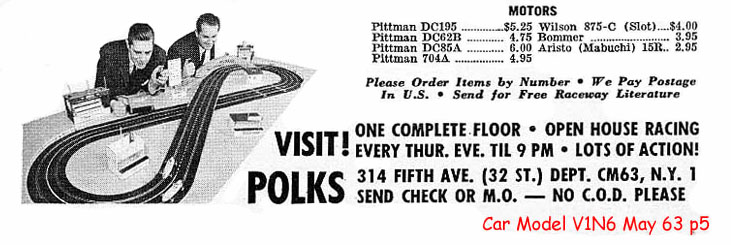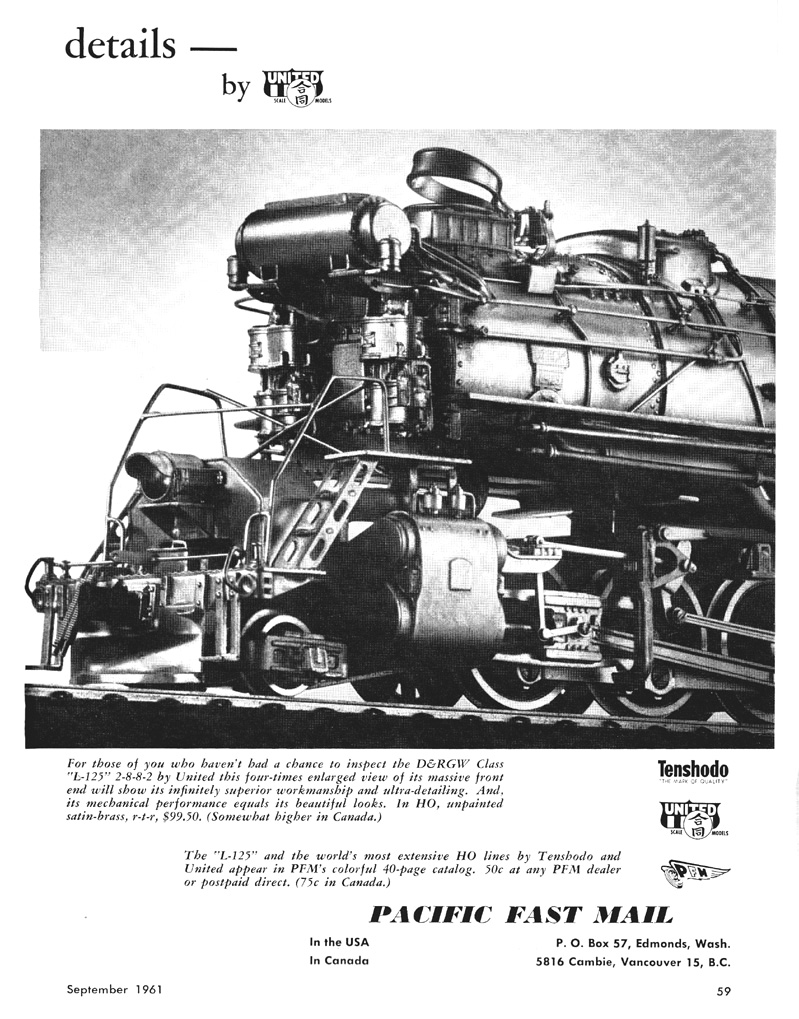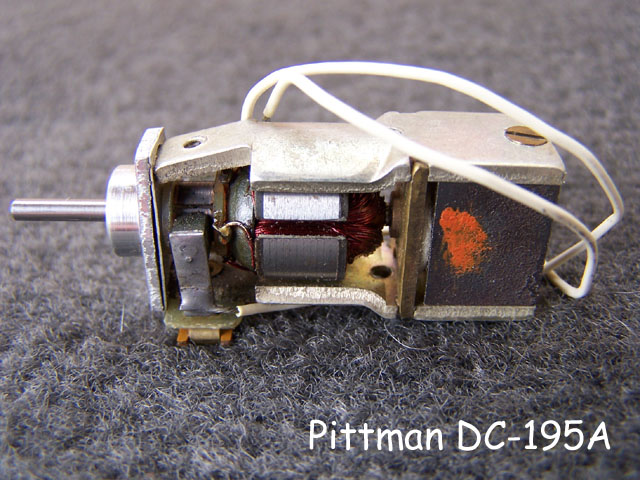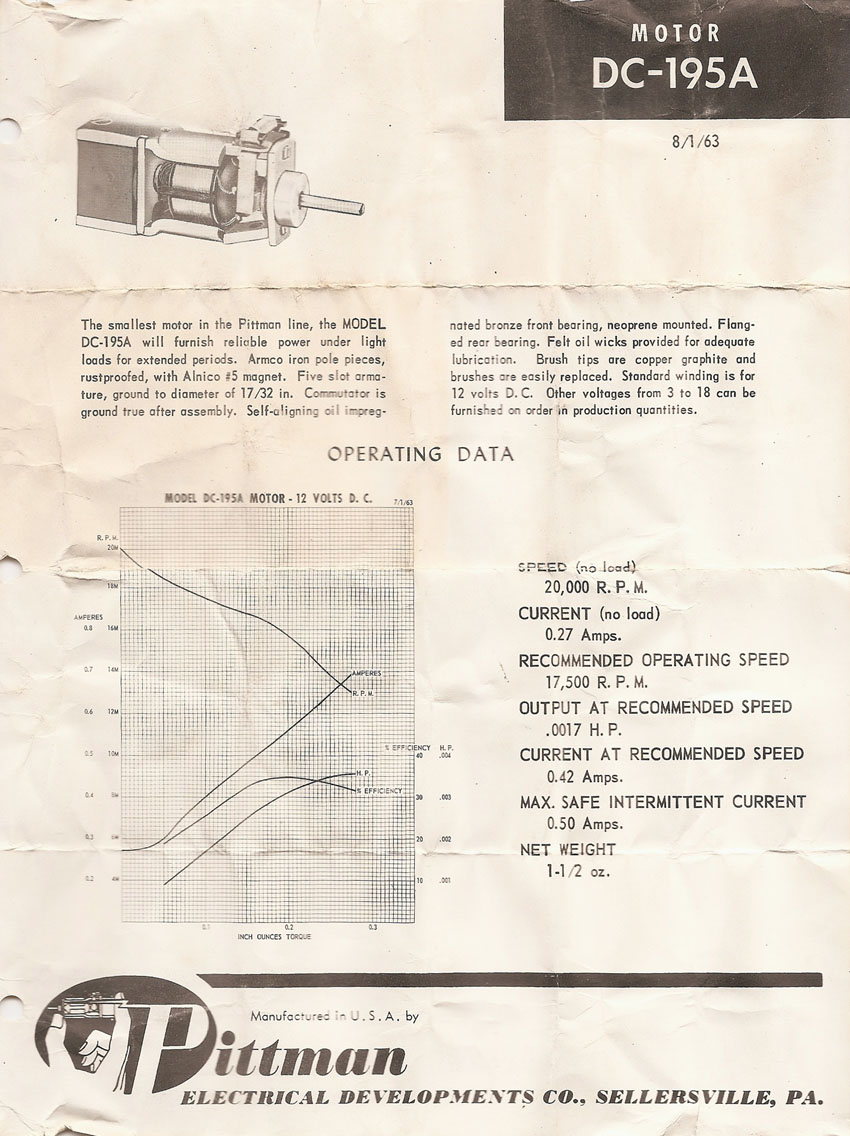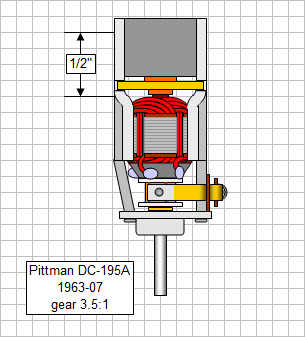Pittman DC-195 and 195A
Photos courtesy Bob Steere, from his collection
Additional information and photography courtesy Don Siegel
The DC-195 was the smallest motor Pittman manufactured in the early 1960s, and was originally intended to be a model train motor. It had been designed several years earlier with a five pole armature wound with smaller diameter (higher AWG) wire, so it would run smoothly at lower RPM, pulling low amperage. The angled frame piece just below the brush assembly is the give-away that this is a model train motor:
Don Siegel writes: “The Pittman (DC-195 in the photo above) is dated May 1, 1960, that's why I think undated data sheets are pre-1960”.
In the early 1960s however, the DC-195’s small size attracted the attention of slot car builders because this motor will fit in all but the narrowest of 1/32 scale GP cars.
As a result of its small size and model train motor design, it ran well at low speed but didn’t have a great deal of torque. However, also because of its small size, it could achieve relatively high RPM (for its day), and that was another feature builders found attractive. Proper gearing (3.5:1 or even 4:1) can make up for a great deal of the low torque if you also build the car to be as light as possible.
Through a series of design improvements and upgrades, this motor and its direct descendent the DC-196 went on to be arguably the best inline motor Pittman produced during it involvement in slot racing.
Here are some additional photos, Auto World cuts and magazine ads for the DC-195:
You may note this high quality American made motor was not cheap! In 1963 the price was $5.25. At the time of this writing (April, 2013) $5.25 would be inflated to about $40.00
Perhaps because of this hefty price tag, the Japanese were quick to produce cheaper copies the DC-195 for use in their hard scale (“O”, “S” and H.O.) brass model train locomotives, most of which were gorgeous to look at, and all of which were quite expensive.
Don Siegel writes: “As a bonus, I included a photo of a DC-195 sold in a plastic box with the label shown here, by PFM, and the motor has Japan stamped on it... not a direct copy, but pretty close!”
PFM is an acronym for “Pacific Fast Mail”, which was the name of a west coast importer/distributor based in Washington State. In the 1950s and 1960s, their specialty was hard scale brass model train locomotives. Here’s an ad from the September, 1961 issue of Model Railroader (the model railroading version of Car Model):
By the way, that brass locomotive in the ad retailed for $99.50, but those are 1961 dollars. At the time of this writing (April, 2013) $99.50 would be inflated to about $773.00. Did I mention it was quite expensive?
Pittman upgraded their DC-195 in early 1963 and called it the DC-195A. The stamped brass bushing plate on the brush end of the motor was gone and replaced by a turned aluminum unit. It still had a five pole armature, but slightly lower resistance windings made for slightly higher amperage draw and thus slightly more power. As you can see in the specification sheet, "slightly" was the word; it was still a model train motor. Note the "no-load" current was only .27 amps, and "maximum safe intermittent current" was .50 amps.
By now Pittman understood that train motors and slot car motors were evolving into entirely different animals. Pittman’s follow-on design, the DC-196, was purpose-built from the outset as a slot car motor.
Click here to continue.






